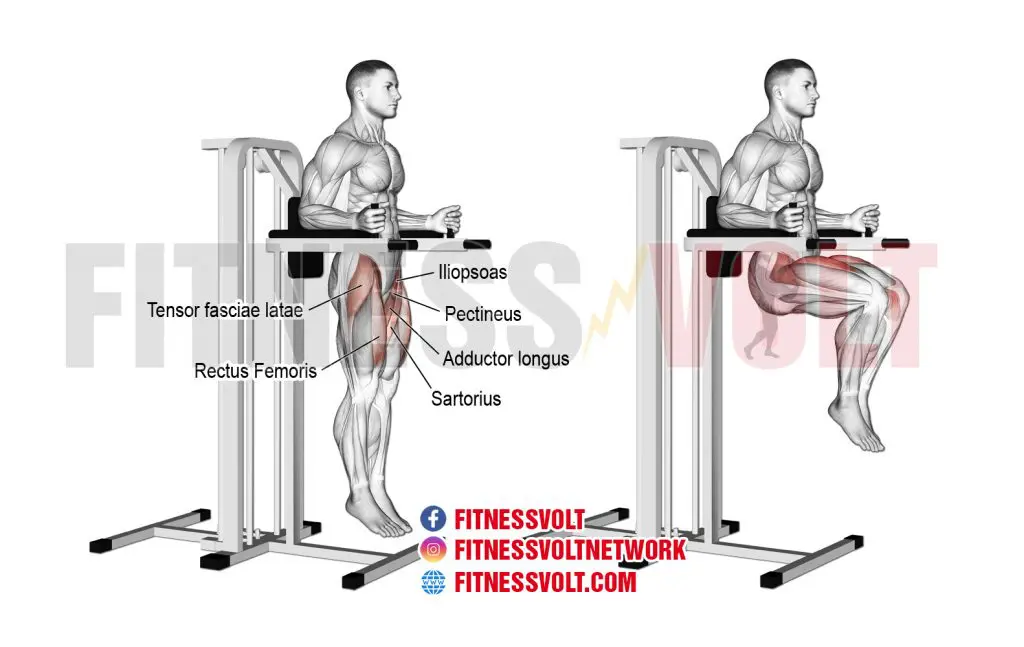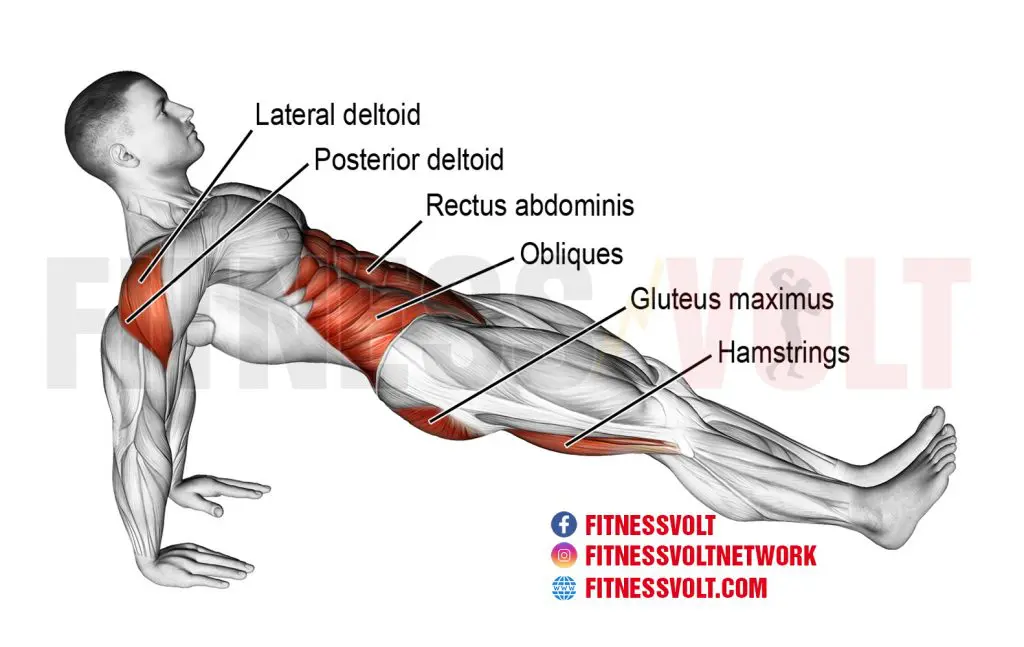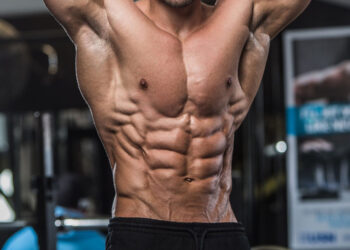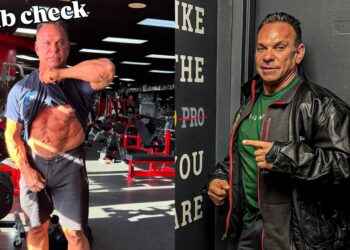Having a strong and muscular core is the epitome of fitness in the eyes of many. But for this group of muscles, there’s a lot more than meets the eye.
A strong and functional midsection will help your performance in every way possible from the gym to the field/court, and anything in between including activities which require simple physical movement.
But it’s very important for protecting the lower back and spine by the same token. And most people want a muscular core which just makes your aesthetics so much better.
But planks and crunches are simply not enough to achieve this.
So today, we talk about how to maximize your training to achieve your best core yet…
Core Muscle Anatomy
Your core consists of several muscles which work together to allow the trunk to perform several different functions. (1)
Level Up Your Fitness: Join our 💪 strong community in Fitness Volt Newsletter. Get daily inspiration, expert-backed workouts, nutrition tips, the latest in strength sports, and the support you need to reach your goals. Subscribe for free!
The main core muscles include…
- Rectus Abdominis
- Internal and external obliques
- Transverse Abdominis
- Erector Spinae
The rectus abdominis (abdominals) is located in the anterior center of the midsection and is responsible for trunk flexion (e.g. bend forward during a crunch or sit-up).
The obliques are on both sides of the rectus abdominis which allow for trunk rotation and lateral flexion.
The transverse abdominis acts to compress the abs for optimal stability and is located on the lower anterior of the trunk.
The Erector Spinae allows for extension of the spine upward and back.
Core Workout Plan
Here are two very effective core workout plans for beginners and more intermediate/advanced individuals for improving strength and stability in addition to building muscle.
This routine will utilize several different exercises that will target each muscle and function of the core for maximum development.
Note: Do this workout 2-3 times per week for at least one month with one day off from core training in between each workout.
Beginner Routine
Exercise 1: Lying reverse crunch
The lying reverse crunch utilizes the weight of your legs to target your abdominals and this is one of the most effective variations you can do for strengthening weak lower abs.
The key here is to control the legs during the reverse crunch while lifting the pelvis off of the ground to maximally engage the lower abdominals.
- Lie on your back and place your arms flat on the floor by your sides with palms down.
- Bent your knees and lift both legs toward your stomach while contracting your core until your pelvis is raised off the ground.
- Slowly lower your legs back down and repeat.
Do 3 sets of 12-15 reps
Exercise 2: Captain’s chair 90-degree leg raise
This variation is much easier for the beginner and it will help to advance to hanging variation.
- Position yourself on the Captain’s chair/dip stand with your back against the padding.
- Lift both legs while bending your knees until your upper legs are parallel to the floor and contract your core.
- Slowly lower both legs and repeat.
Do 2 sets of 15 reps
Exercise 3: Kneeling cable rope crunch
The cable rope crunch is a must-have as it allows you to contract your abdominals against big resistance loads.
- Kneel down but keep your torso upright and grab the high attached rope with both hands.
- Lean slightly forward and spread both handles apart tucking your head under.
- Crunch down and forward contracting your core while not allowing your torso to dip below parallel.
- Raise up slowly until your torso is almost straight.
Do not lean back and touch your butt to your heels during the crunch.
Do 3 sets of 12-15 reps
Exercise 4: Cable or band Pallof Press
The Pallof Press is an awesome anti-rotational exercise because you’re fighting against rotational resistance. You’ll build core stability and strength but this isn’t a big muscle builder.
- Set up the single handle grip or band to a base at lower chest level.
- Turn so that your side is facing the cable pulley system and grip the handle with the hand closest to it.
- Place the outer hand over the closest hand firmly or interlock your fingers.
- Walk away from the base to create tension and bend your knees in an athletic stance while keeping your torso erect and shoulder blades retracted.
- Pull the handle toward your chest and then press it straight out in front of you with only slight protraction (extending forward) of the shoulders.
- Hold this position for 2 seconds and then repeat the process.
Hold this position for 30 seconds on each side for 2 rounds.
Here’s an awesome article on the pallof press.
Exercise 5: Vacuum
We just did an article about how powerful this old school core exercise is for tightening up your core and making your waist smaller. It strengthens the deep core muscles (transverse abdominis) which improves aesthetics big time.
This one is performed standing and you’ll simply blow out as much air as you can, then suck in your lower stomach as much as you can while tightening your entire core.
- While standing, blow out as much air as you can, then suck in your lower stomach and tighten your core.
Hold the vacuum for 30 seconds and do 2 rounds.
Check out this article to learn more about the vacuum.
Intermediate/Advanced Routine
If you need more of a challenge then this workout is just what you’re looking for.
Exercise 1: Hanging straight leg and hip raise
Working from the bottom up is a recommended way to smash your abdominals and most people really don’t realize how heavy their legs are which creates a ton of resistance during similar leg raise movements.
So, we’ll utilize your bodyweight when at your strongest at the beginning of a workout to do this one.
This is also an effective hip flexor exercise which is beneficial for optimal lower body function.
Level Up Your Fitness: Join our 💪 strong community in Fitness Volt Newsletter. Get daily inspiration, expert-backed workouts, nutrition tips, the latest in strength sports, and the support you need to reach your goals. Subscribe for free!
- Hang from a bar and lift both legs up while lifting the pelvis and legs above 90 degrees.
Don’t go too high otherwise you’ll take a lot of tension away from the core.
Do 2 sets of as many reps as possible
Exercise 2: Tuck windshield wiper
The windshield wiper will really hammer your abs and obliques due to the rotation. But it’ll take some mental fortitude and the will to not give up before you’ve really stimulated the target muscles. This variation is performed while the legs are tucked and the butt is lifted.
Here’s a video example…
- Hang from a bar and with your knees bent lift both legs up while tucking them into your torso by leaning back.
- Rotate your hips from left to right while keeping your core tight.
Do 2 sets of 12 reps for each side
Exercise 3: Barbell suitcase deadlift
The suitcase deadlift isn’t done enough but we can tell you that it’s an amazing anti-flexion exercise that will build power and core stability.
- With the loaded barbell on the floor, bend down and grip the center.
- Keep your torso straight and don’t allow your knees to go lower than parallel.
- Push off using your midfoot and as the bar reaches knee level, extend your hips forward.
Your shoulders and hips should not lean toward the barbell. Try as hard as you can to keep everything aligned.
Do 2 sets of 12 reps
Exercise 4: Cable woodchop
This cable variation is a great oblique exercise that hits the target muscles from the top down which is the opposite of what the windshield wiper aims to do in the opposite direction.
- Use a single grip attachment high on the cable pulley system.
- Stand diagonal to the cable pulley and grip the handle using the nearest hand, then place your other hand over the other.
- Keep your arms straight and pull the handle across your body from high to low while rotating your torso to execute the movement.
- Switch to the other side after you’ve completed one set and contract your obliques throughout the exercise.
Do 2 sets of 15 reps
Exercise 5: Reverse plank
The reverse plank is an underrated exercise but it’s more challenging than the standard plank. You’re working the posterior chain (backside of the body), core, and stability with this one.
The posterior chain is often a weak point for many people due to there not being enough attention given to the area, and few are aware that certain muscles of the back are considered as part of the core. So, we want to utilize this exercise to improve your rear side and even posture since this exercise is good for that too.
- Lie on your back and place your arms out flat on your sides with the palms facing up.
- Keep your torso straight and press through your heels to lift your torso off the ground without overextending.
You can elevate your torso onto something to make the exercise easier.
Hold the reverse plank for 30 seconds and do 2-3 rounds.
Exercise 6: Vacuum
The vacuum should be performed frequently for the reasons previously mentioned. It’s a great exercise for deep core strength and aesthetics.
See directions for beginner routine.
Hold for 30 seconds and do 3 rounds.
Why Do We Need To Train Our Core?
Core training is very necessary for many reasons which include… (2)
- Strength
- Performance
- Balance
- Stability
- Injuries
- Lower back pain prevention and alleviation
- Improved posture
- Physical appearance
Working the abs, obliques, and surrounding muscles will strengthen and improve the functional aspect of the trunk’s ability to twist, bend, extend, lift, etc. The muscles also contribute greatly to spine stability and even fatigue when weak.
One 2019 study found that core training may improve running economy, core endurance, and static balance. (3)
Another prominent study concluded that core training is superior to regular resistance training for improving lower back pain. But, it was noted that the deep core muscles (e.g. transverse abdominis and internal obliques) should be the main focus for achieving such results. (4)
And one piece of the scientific literature recommends focusing on multiple aspects of core training in a specific order for injury prevention; which includes muscle recruitment, followed by stabilization in various postures, and then finally, full-body dynamic movements. (5)
Does Core Training Burn Fat?
We already know that the workouts prescribed above will build muscles but is training the core good for fat loss as well?…
Well, yes and no.
You see, there’s no such thing as what we like to call spot reduction. For example, you cannot expect to achieve fat loss just in your midsection by doing any core exercises. (6)
This is because the body burns fat as a whole rather than just in one area (although, some areas lose quicker than others in some cases). However, core training can help the body to burn calories (if training hard enough), therefore contributing to overall fat loss.
But it really depends on training frequency and the effort of which is put forth during each session.
And if you really want to burn the most amount of fat to reveal the muscles underneath, then your diet needs to be in check along with your physical activity.
Wrapping Up
This beastly core workout isn’t for the faint of heart but if you can battle through each exercise, then you can rest assured that you’re going to see results.
By incorporating these exercises you’ll strengthen and improve every aspect of your midsection while surprising yourself in the process.
So, we ask that you commit to only three days per week for this core workout because consistency is key to making big progress.










